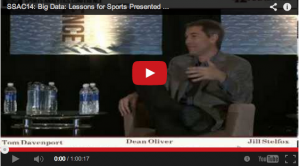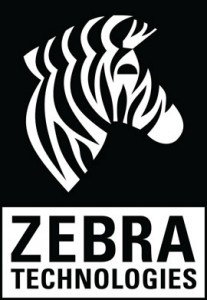 CES (Consumer Electronics Show) wasn’t the only early-2014 tech show to feature wearables: The MIT Sloan Sports Analytics Conference (SSAC14) was held at Boston’s Hynes Convention Center in February, and it too featured a greater-than-ever emphasis on wearable technology. Although L-Tron partner, Zebra Technologies, is a relative newcomer to sports wearables, the company has a wealth of relevant experience in wearable sensors, as well as in the Big Data acquisition and analytics required to put wearable-sourced data to best use.
CES (Consumer Electronics Show) wasn’t the only early-2014 tech show to feature wearables: The MIT Sloan Sports Analytics Conference (SSAC14) was held at Boston’s Hynes Convention Center in February, and it too featured a greater-than-ever emphasis on wearable technology. Although L-Tron partner, Zebra Technologies, is a relative newcomer to sports wearables, the company has a wealth of relevant experience in wearable sensors, as well as in the Big Data acquisition and analytics required to put wearable-sourced data to best use.
Jill Stelfox, Zebra Vice President and General Manager of its Locations Solutions Division, participated in a key SSAC14 panel discussion, Big Data: Lessons for Sports, along with John Forese, SVP and General Manager of Live Analytics, Dean Oliver, Director of Production Analytics for ESPN, Tom Davenport, Professor of Information Technology and Management at Babson College, and Jim DeGraw, a partner in the Ropes & Gray technology group. A video of the panel discussion is available here.
When asked to describe Zebra’s involvement in Big Data, Stelfox answered:
“Zebra Technologies has been around for decades, and we really turn physical information into digital information – and very quickly. We came into sports a couple of years ago, and we do, basically, player tracking. We put tags on players, we put little tags in the flags, on the sticks – soon to be in the ball – and we track everything.
The tags blink at 25 times a second, and we create micro movements. We deliver that data in a useful way in about 120 milliseconds from when something happens on the field to when it hits the server or the broadcast image for embellishments or things like that for fans at home.”
When asked to provide a short tutorial on what data-collection methods work best under what circumstances, Stelfox explained:
If you look at a specific sport, there are some times where you need very accurate information. Collection of data has to be key, and it’s got to be very accurate data. In places where there’s not a lot of collisions – for example basketball – video works great for that. You can absolutely track players. If you think about it on video, if you have two people coming at each other, they become an object and then they separate. You need to track the coming together and coming apart.
GPS works great outside; not so good inside. If you’re a player, you want to wear the same equipment indoors and outdoors. In the case of soccer, it’s mostly outdoors. In the case of football, you’re indoors, outdoors … practice is both indoors and outdoors. You don’t want to have different kinds of technologies, because it will [also] give you differences in the data collection and therefore lead to differences in the analysis, which you also want to avoid.”
We work a lot in both professional football and college football, because collision is key. We joke all the time [that] we bring insight to the line. If you are on the offensive or defensive line, it’s one thing to track specialty players out in the open, but if you’re on the line you’re not tracked a lot, and people don’t know a lot about the force and momentum that you have as you’re making a play, and we can tell you those little micro movements, and they make a difference.
The fun thing to see – and I think that this is a Big Data problem – we collect all that information. But now you’ve got a set of guys on the line, and we know how big they are – we know their weight, their height – and they’re going to push forward. What’s interesting is, is it the individual push or the whole push? And it’s the whole push – right? And so you want to know Big Data, you want to get it to the one player. But then you want to be able to look across four or five guys all at the same time. How do they interact to make a difference?” 
And that’s just in the first 15 minutes of an hour-long discussion. Working regularly with Zebra to deploy RFID and RTLS solutions to less glamorous enterprise challenges, it was interesting to watch and hear Jill Stelfox explain how those same technologies are employed in the popular arena of sports. Her obvious enthusiasm for the subject was a lot of fun, too!













